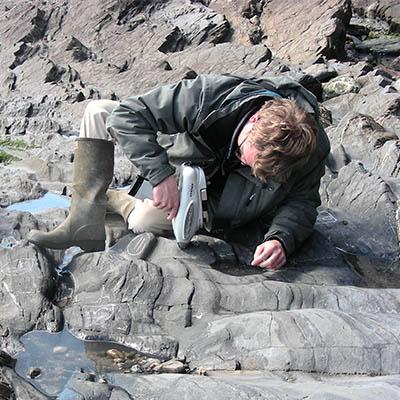

Prof. Dr. Matthias Sinnesael
Biography
After successful post-docs at Durham University, and at the "Observatoire de Paris," Matthias is now an assistant professor in the Geology Department at Trinity College Dublin, in Ireland.
Matthias was a AMGC pillar and still visits often on different projects.
Joint PhD 2020 (FWO fellowship) VUB-UGhent with Philippe Claeys as advisor.
PROJECT TITLE:
How are astronomical (Milankovitch) climate cycles recorded in the sedimentary archive?
RESEARCH SUMMARY:
The Late Ordovician offers the potential to study extreme climatic conditions, rapid transitions from warm to cold climate (and back), and the functioning of a climate system without the CO2 sink effect provided by continental vegetation. When different techniques for time-series analysis are applied to available geochemical and geophysical data-series, we should be able to identify these climate cycles in the rock record. This project also involves the application of an advanced climate GCM model (HadCM3) to the boundary conditions of this specific period in the Earth's history. This methodology envisages a better insight into the timing and duration of the Ordovician-Silurian climatic events. A data-model comparison will shed light on the role of astronomically driven variations in the climatology of this period.
In order to be able to carry out conclusive astronomical analyses, we ideally need long, continuous and undisturbed sections, which can be challenging, especially for the Hirnantian (e.g. Ghienne et al., 2014). For these sections we need high resolution data in the stratigraphic domain, such as magnetic susceptibility, stable isotopes, lithological variations, CaCO3-content, color reflectance… (ideally, more than one proxy for the same section). The resolution of the data determines the possible periodicities we can identify.
FIELD SITES:
Sedimentary samples from Italy, France, USA, Canada, Morocco, South-Africa,…
KEYWORDS:
IRMS, EA, pXRF, micro-XRF, ICP-MS, Magnetic susceptibility
